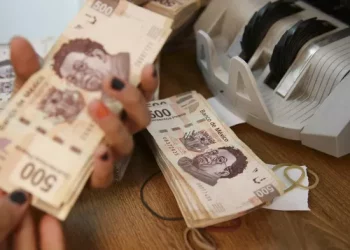The Indian Rupee (INR) continued to experience selling pressure on Thursday, weighed down by weakness in Asian equity and currency markets following U.S. President Donald Trump’s announcement of broad-based tariffs. Trump revealed that he would impose a 26% tariff on imports from India, effective April 9, as part of his broader plan to apply duties to all U.S. imports. This move contributed to the ongoing selling pressure on the INR.
Impact of Crude Oil Prices
While the INR faces downward pressure from the tariff announcement, a drop in crude oil prices may help mitigate the currency’s losses. As the world’s third-largest oil consumer, India benefits from lower oil prices, which often positively affect the value of the INR.
Upcoming Data
Investors are awaiting key U.S. economic data later on Thursday, including the weekly Initial Jobless Claims, the final S&P Global Services PMI, and the ISM Services PMI. All eyes will also be on the U.S. March Nonfarm Payrolls report, scheduled for release on Friday.
Tariffs and Trade Imbalance
Trump justified the tariffs by highlighting the trade imbalance between the U.S. and India. He stated, “They (India) are charging us 52% and we charge almost nothing for years and years and decades.”
India’s Economic Indicators
The final reading of India’s HSBC Manufacturing PMI for March showed an increase to 58.1, exceeding the initial estimate of 57.6, indicating continued economic strength. Despite the tariff announcement, the INR had a strong performance in March, marking its best monthly gain in over six years. This was fueled by significant foreign portfolio inflows and a reduction in bearish market bets. Foreign investors bought nearly $4 billion in Indian equities and bonds, reversing the outflows of about $12 billion seen in the earlier months of 2025.
U.S. Tariff Escalation
On Wednesday, the Trump administration revealed that it would impose a 10% baseline tariff on all U.S. imports and additional duties on around 60 nations with the largest trade imbalances with the U.S. U.S. Treasury Secretary Scott Bessent warned that any retaliation from trading partners would lead to further escalation.
Federal Reserve Governor Adriana Kugler also expressed concerns that the rising tariffs in the U.S. could lead to prolonged inflationary pressures, adding further uncertainty to the global economic landscape.
Technical Outlook for USD/INR
Despite the potential for bullish retaliation, the Indian Rupee remains under pressure. On the daily chart, the negative outlook for the USD/INR pair is intact, with the price trading below the key 100-day Exponential Moving Average (EMA). The 14-day Relative Strength Index (RSI) is also signaling downward momentum, remaining below the midline at 38.15.
Initial support for USD/INR is seen at 85.42, the low from April 2, followed by the psychological level of 85.00. A further decline could see the pair targeting 84.84, the low from December 19. On the upside, the first key resistance level is located at the 85.90-86.00 range, coinciding with the 100-day EMA and a round figure. A breakout above this level could open the door for a rally toward 86.48, the low from February 21, with further upside targeting 87.00.
Related Topics:


























